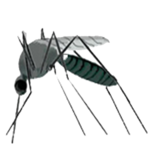Index of malaria forms: Difference between revisions
From haematologyetc.co.uk
No edit summary |
No edit summary |
||
| (7 intermediate revisions by the same user not shown) | |||
| Line 4: | Line 4: | ||
---- | ---- | ||
{| class="wikitable" style="border-style: | {| class="wikitable" style="border-style: none; border-width: 4px; color:black" | ||
|colspan="1" style = "font-size:110%; color:black; background: FFFAFA"|<span style="color:navy>'''Alphabetical Index'''</span> | |colspan="1" style = "font-size:110%; color:black; background: FFFAFA"|<span style="color:navy>'''Alphabetical Index'''</span> | ||
[[File: | [[File:Mosquito.png|150px|right|<span style="font-size:90%"></span>|link={{filepath:Mosquito.png]] | ||
</br></br> | </br></br> | ||
'''A''' | '''A''' | ||
[[Accolé form description|Accolé form]] - the "edge" parasite, most closely associated with ''P. | [[Accolé form description|Accolé form]] - the "edge" parasite, most closely associated with ''P.falciparum'' though certainly not restricted to this species | ||
| Line 19: | Line 19: | ||
[[Angular forms]] - a solid late trophozoite form that appears angular in shape, most closely associated with ''P.malarie'' | [[Angular forms]] - a solid late trophozoite form that appears angular in shape, most closely associated with ''P.malarie'' | ||
Appliqué” form - see [[Accolé form description|accolé form]] | |||
---- | ---- | ||
| Line 63: | Line 67: | ||
[[Ex-flagellation]] - an ''in vitro'' artefact of storage in which parasites undergo changes normally occurring in the mosquito gut | [[Ex-flagellation]] - an ''in vitro'' artefact of storage in which parasites undergo changes normally occurring in the mosquito gut | ||
Edge form - see [[Accolé form description|accolé form]] | |||
---- | ---- | ||
| Line 119: | Line 126: | ||
[[Phagocytosed malaria pigment]] - malaria pigment is released into the blood as schizonts rupture and is phaocytosed by neutrophils or monocytes | [[Phagocytosed malaria pigment]] - malaria pigment is released into the blood as schizonts rupture and is phaocytosed by neutrophils or monocytes | ||
Revision as of 10:16, 21 May 2024
Navigation
Return to Malaria main index
| Alphabetical Index
A Accolé form - the "edge" parasite, most closely associated with P.falciparum though certainly not restricted to this species
B Banana gametocyte - the curved elongated form of the gametocyte of P.falicparum
C Central chromatin dot - the chromatin dot appears to lie within the vacuole of a ring form, may be more frequent in P.malariae'
D Daisy head schizont - schizonts with a central area of pigment surrounded by petal like merozoites
E Ex-flagellation - an in vitro artefact of storage in which parasites undergo changes normally occurring in the mosquito gut
Edge form - see accolé form F Fimbriation - irregular projections of the erythrocyte membrane seen mainly in P.ovale
J James' dots - frequent red-purple dots in the cytoplasm of P.ovale infected erythrocytes
M Malaria pigment - tbrown or gold masses within the cytoplasm of infected red cells or overlying parasites
R Ring forms - probably the most familiar and frequently encountered parasite form
S Schüffner's dots - frequent red-purple dots that arise in the cytoplasm of erythrocytes infected by P.vivax
P Phagocytosed malaria pigment - malaria pigment is released into the blood as schizonts rupture and is phaocytosed by neutrophils or monocytes |
